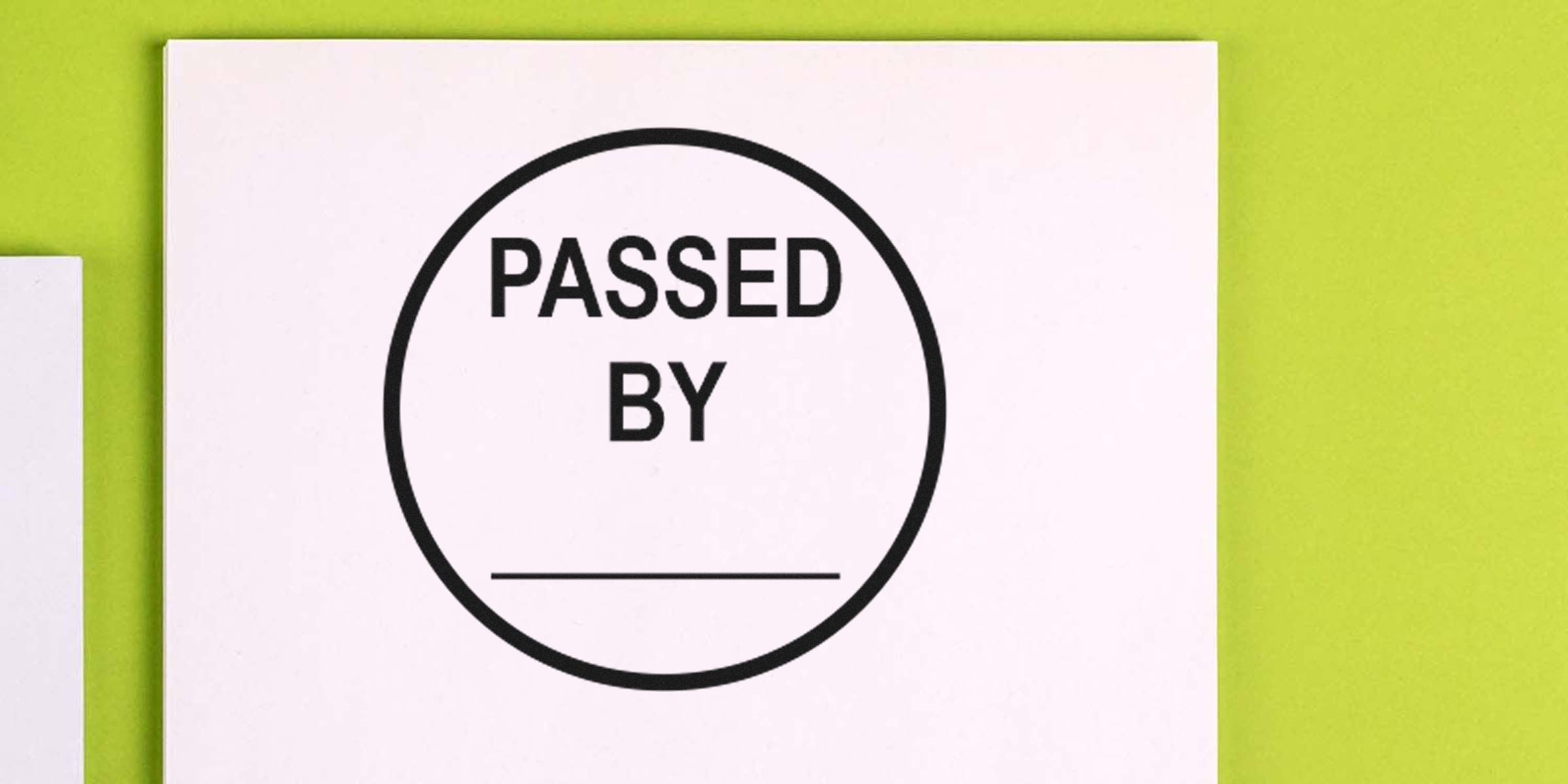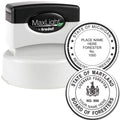If you need a reliable rubber inspection stamp pad, you may already know how vital it is for consistent mark quality and smooth day-to-day operations. Whether you’re finalizing products on the manufacturing line or checking items in the warehouse, a dependable pad helps you leave a crisp impression each time. Let’s walk through the top features you’ll want to keep in mind so you can choose the best pad with absolute confidence.
Recognize The Importance
Before diving into specifics, it helps to understand why a good stamp pad makes such a difference. Every inspection or quality-assurance mark you apply carries a message about your brand’s standards. If your mark is faint, streaky, or smudged, it might look unprofessional and create confusion among team members or customers.
When you invest in a proper pad, you increase efficiency and clarity. You won’t need to re-stamp items multiple times, and you’ll cut down on ink waste in the process. Want to maintain a spotless workspace? A well-designed stamp pad helps control ink spills, so you can worry less about cleanup and focus more on validating products.
Understand Pad Material Options
Wondering what your rubber inspection stamp pad should be made of? This is one of the earliest questions you’ll face, and it’s an important one to get right. Different materials affect everything from overall durability to how evenly ink transfers onto your stamp.
Common Pad Materials
- Felt
- Often the most wallet-friendly, felt pads are made by tightly compressing fibers. They’re known for providing a smooth, even ink distribution. However, continuous use can wear them down over time.
- Foam
- Foam pads are lightweight and easy to re-ink, so you can keep them going for a longer period. You’ll often see foam pads with integrated plastic covers that help lock in moisture. If you only stamp occasionally, foam is a helpful option.
- Spring-Loaded Textile
- Some premium pads use a textile surface with a gentle spring mechanism underneath. This design can provide better comfort during repeated stamping and produce consistent marks even under rapid use.
How To Choose
Think about your environment. If you’re stamping items constantly, you might choose a sturdier textile pad with a spring backing. For moderate use, a softer foam or felt pad might be perfectly fine. Keep in mind that felt and foam are often easier to re-ink quickly, but if you need to stamp thousands of items in one day, a heavier-duty option could save you money in the long run.
Focus On Ink Compatibility
Up next, let’s chat about ink. You might want a fast-drying ink if you’re marking non-porous surfaces like plastic packaging, or maybe a water-resistant ink for products that might face humidity. Do you need special colors? These details all influence which pad will serve you best.
Water-Based Vs. Oil-Based Ink
Water-Based Ink:
Great for paper or cardboard surfaces. Dries relatively fast and cleans up easily, but may smear on plastics or coated surfaces.Oil-Based Ink:
Tends to be more resilient under tough conditions. It may dry a bit slower, yet it’s safer for marking slick materials without immediate smearing.
Multi-Purpose Pads
Some pads are designed to handle many types of ink, letting you switch between water- and oil-based formulations as you go. If your business uses multiple stamp types or inks for various tasks, you may prefer a “universal” pad. Just confirm that the pad doesn’t reduce the lifespan of either ink type. Mixing different ink formulas in the same pad can sometimes lead to less-than-ideal results.
Check Durability And Lifespan
Nothing’s more annoying than a stamp pad that wears out too soon, especially if you’re working in a fast-paced environment. When you’re doing your research, look for reliable materials that can hold up to frequent stamping without warping or drying out.
Signs Of A Sturdy Pad
Reinforced Edges
If the edges of the pad are sealed or have an extra layer of protection, it’s less likely the ink will leak at the sides.Thick Padding
A thicker pad can store more ink, meaning less frequent re-inks for you. Also, it reduces the chance of a bare spot forming in the middle.Secure Cover
Look for pads with a tight-fitting or hinged cover that’s easy to open and close. This cover keeps dust and debris away while preventing premature drying.
Stretching Its Lifespan
Simple care tips can help you get the most out of your pad:
- Clean the stamp head regularly to prevent stray dirt from transferring onto the pad.
- Store the pad in a cool, dry place to avoid excessive heat or moisture exposure.
- Re-ink as recommended by the manufacturer to maintain consistent color and saturation.
Optimize Surface Coverage And Application
Your perfect rubber inspection stamp pad should deliver a uniform coat of ink to your stamp surface. Patchy impressions can result if the pad either doesn’t release enough ink or the surface is uneven. Over-inking, on the other hand, can create a messy imprint that smudges the moment you touch the item.
Tips For Better Coverage
Press Evenly
It might sound obvious, but a smooth, consistent downward press is key. Lightweight materials demand a gentler approach, so you don’t bottom out the pad and cause excessive ink transfer.Rotate The Pad
Every so often, rotate your pad 180 degrees. This trick spreads the pressure across the entire surface, helping the pad wear more evenly.-
Find The Right Size
If your stamp is small, a very large pad might be overkill. Conversely, if you have an oversized stamp, make sure the pad is wide enough, so you won’t have to angle or move the stamp repeatedly to load ink.
Consider Portability And Storage
Portability is crucial if your stamping process moves from station to station, or if you occasionally work off-site. In those cases, you’ll want a lightweight design, preferably with a snug, snap-close lid to keep the ink contained. That way, you can toss it into a bag or tool kit without fears of a big inky mess showing up later.
Storing Your Pad
Even if you’re mostly stationary, you still want a pad that fits neatly on a desk or in a supply drawer. Will it lie flat without sliding around? A non-slip base can be immensely helpful. Also, think about the shape and thickness—some thicker pads offer more ink capacity, but they might take up a lot of space.
Explore Additional Features
Sometimes, stamp pad manufacturers include bells and whistles that can really come in handy. While not everyone needs every single feature, it’s good to know what’s out there if you ever want to level up your stamping process.
Built-In Reservoirs
Pads with integrated reservoirs help regulate ink flow, so the surface stays moist without oversaturating. These reservoirs often come with a gauge or indicator letting you see at a glance how much ink remains. They’re especially useful if you don’t want to guess when it’s time to re-ink.
Quick-Drying Ink Formulations
If you’re working on slick surfaces—like product packaging or glossy labels—quick-drying ink pads keep smudging to a minimum. Some quick-dry pads feature a slightly textured surface that accelerates evaporation, helping the ink set faster once you stamp.
Adjustable Firmness
Imagine adjusting the cushiness of your stamp pad. Yes, it’s possible. Some higher-end models let you switch out inserts to fine-tune the level of resistance. If you’re stamping all day, you might prefer a softer surface that’s gentle on your wrist. If you only stamp occasionally, a firmer pad might suffice.
Why Choose ESS
Selecting the perfect stamp pad is easier when you have a trusted partner guiding you. At ESS, we’ve specialized in custom stamps, inspection stamps, QC stamps, and QA stamps for decades. Our family-owned and operated business has proudly served customers since 1964, always with a genuine commitment to quality and speed.
We know your time is valuable, so our turnaround is quick. We also believe that great customer service matters just as much as a superior product. If you ever need a custom stamp for your company’s branding, take a peek at our company logo inspection stamp. You can expect the same level of care that goes into all our rubber inspection stamps and pads.
Expert Guidance
Not entirely sure which pad material or ink type fits your workflow? We’re here to help. Whether you stamp in a food production facility or handle sensitive lab documents, we’ll chat through your needs and match you with something reliable, straightforward, and long-lasting. Our team is always on standby to talk specifics, share useful tips, or help you troubleshoot any stamping challenge.
Frequently Asked Questions
Below are a few questions people often ask when shopping for a new rubber inspection stamp pad. We hope these quick answers will guide you toward an informed decision.
-
How Often Should I Re-Ink My Stamp Pad?
It depends on usage, but a good rule of thumb is to monitor the vibrancy of your stamped impression. If it starts looking faint or uneven, it’s time to add fresh ink. Some pads with built-in reservoirs will make this process simpler by indicating when levels are low. Does The Pad Size Have To Match My Stamp Exactly?
Not necessarily. Your pad just needs to be large enough to fully cover the stamp surface without forcing you to slide or tilt the stamp. Oversized pads are sometimes more convenient, since you can place multiple smaller stamps on them. However, a perfectly sized pad can help conserve ink.What’s The Best Way To Clean My Pad?
Most of the time, you’ll want to avoid soaking your pad in water. Instead, use a damp cloth or paper towel to remove excess ink from the surface, then let the pad dry thoroughly. Make sure to store it closed so dust and debris don’t cling to the ink.Can I Use Multiple Ink Colors On The Same Pad?
It’s best to stick with one color (or at least one ink type) for each pad to avoid muddying or diluting the color. If you anticipate switching inks frequently, consider investing in separate pads or look for a multi-ink pad that is explicitly designed for that flexibility.What If I Need A Custom Logo Or Special Mark?
That’s exactly what we do at ESS. With our long history in custom stamps, we can help you design and produce an inspection or branding stamp that stands out. We thrive on creating unique solutions for businesses, and we’re more than happy to work with you on the shape, size, and even the type of ink you require.
Final Thoughts
Finding the right rubber inspection stamp pad means paying attention to the details. You’ll want to focus on material construction, ink compatibility, durability, and even unexpected extras that might simplify your work. Never underestimate how much time and frustration you can save by picking a quality pad in the first place.
If you need a little help along the way, ESS is right here to ensure you get a stamp pad that fits your business perfectly. After all, a crisp and clear inspection mark isn’t just about quality control—it’s about showing your clients and team members that you care about precision. With the right pad at your side, you’ll be on your way to faster stamping, neater impressions, and a more professional presentation. And if you’re ever unsure where to go next, we’re always happy to lend a helping hand.


















